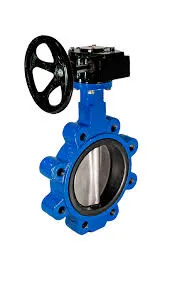10 月 . 31, 2024 22:15 Back to list
Design and Functionality of DIN Standard Globe Valves for Flow Control
Exploring the Din Globe Valve An Essential Component in Fluid Control
In the realm of industrial applications, valves play a crucial role in regulating the flow of liquids, gases, and slurries. Among the various types of valves, the globe valve stands out for its efficiency and versatility. When it comes to standardization in design and manufacturing, the DIN (Deutsches Institut für Normung) globe valve is a commonly referenced component. This article delves into the characteristics, applications, and advantages of the DIN globe valve.
What is a Globe Valve?
A globe valve is a type of valve used to control fluid flow in piping systems. Its name derives from the spherical body shape of the valve. The design includes a movable disc (or plug) that can be raised or lowered to open or close the flow path. This configuration enables precise controlling of flow rates, making globe valves ideal for applications where throttling is necessary.
Characteristics of DIN Globe Valves
The DIN globe valve is manufactured according to specific standards set by the Deutsches Institut für Normung. These standards ensure consistency in quality, safety, and performance across different industries. DIN globe valves typically feature
1. Robust Construction Made from durable materials like stainless steel, cast iron, or bronze, these valves are designed to withstand high pressures and temperatures. 2. Varied Sizes and Connections DIN globe valves are available in a wide range of sizes and connection types, including threaded, flanged, and welded connections, making them suitable for numerous applications.
3. Effective Sealing The design allows for effective sealing, minimizing the risk of leakage and ensuring efficient operation.
4. Ease of Maintenance Most globe valves offer easy maintenance options, allowing for quick repairs and replacement of internal components, thus reducing downtime in industrial processes.
din globe valve

Applications of DIN Globe Valves
DIN globe valves are widely used across various industries, including
- Water Treatment They control the flow of water and chemicals in treatment plants, ensuring optimal processing. - Oil and Gas In upstream and downstream operations, these valves are essential for flow regulation in pipelines and refining processes. - Chemical Processing They allow precise control over the flow of chemicals in reactors and other processing equipment. - Heating and Cooling Systems In HVAC applications, globe valves facilitate the control of fluid flow in heating and cooling loops.
Advantages of Using DIN Globe Valves
The adoption of DIN globe valves presents several benefits
- Precision Control Their ability to throttle flow makes them ideal for applications requiring fine adjustments. - High Reliability With robust construction and effective sealing, DIN globe valves offer high reliability and longevity. - Adaptability Their diverse design allows integration into various systems, catering to a wide range of industries.
Conclusion
The DIN globe valve is an essential component in fluid control systems, offering reliability, precision, and adaptability. By adhering to international standards, these valves ensure consistent quality and performance across various applications. As industries continue to evolve, the role of DIN globe valves in maintaining efficient and effective fluid management will remain pivotal. Whether in water treatment, oil and gas, or chemical processing, these valves are key to ensuring safe and regulated operations.
Share
-
Understanding the Differences Between Wafer Type Butterfly Valve and Lugged Butterfly ValveNewsOct.25,2024
-
The Efficiency of Wafer Type Butterfly Valve and Lugged Butterfly ValveNewsOct.25,2024
-
The Ultimate Guide to Industrial Swing Check Valve: Performance, Installation, and MaintenanceNewsOct.25,2024
-
Superior Performance with Industrial Swing Check Valve: The Essential Valve for Any SystemNewsOct.25,2024
-
Industrial Swing Check Valve: The Ideal Solution for Flow ControlNewsOct.25,2024
-
You Need to Know About Industrial Swing Check Valve: Functionality, Scope, and PerformanceNewsOct.25,2024